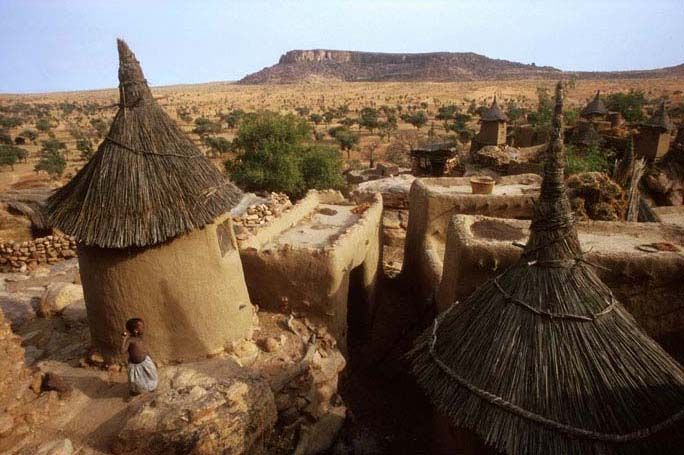L 19 |
Dogon village |
type |
|
place |
Dogons were settled around the Bandigar plateau (today: Mali Republic) in the 13th century. Their lifestyle and their settlements have hardly changed throughout the centuries. More extensive villages in the plains are fine examples of the growing type. Seen from a bird’s eye view, these villages display their highly special traceries. Although the constituents of the pattern are repeated, the composition’s vibrancy is the result of endless variations on their configuration. The basic element, the dwelling unit of a family, is made up of several files, containing a courtyard or garden with a stonewall border. The position of the gardens, the fixed reference points of the composition, is defined by trees, elements of scarce vegetation. Basic units of this composition are flat-roofed quadratic dwellings with adobe walls and characteristic cone-roofed, circular stores with farm outbuildings built near them. Cells of versatile dimensions and shapes are divided from each other by small lanes, allowing for thousands of ways of integrating more and more new components in a growing pattern. The function and use of individual constituents is strictly defined. Some of the buildings were built exclusively for men, but there is one also reserved for women having their periods.









